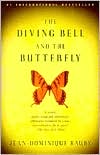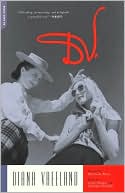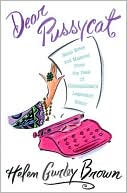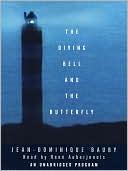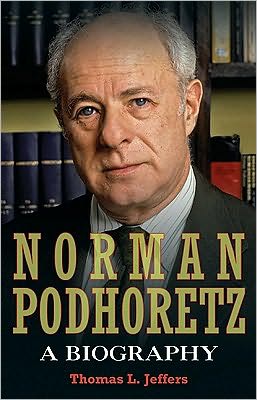Restless Genius: Barney Kilgore, the Wall Street Journal, and the Invention of Modern Journalism
The story of the man who transformed The Wall Street Journal and modern media\ In 1929, Barney Kilgore, fresh from college in small-town Indiana, took a sleepy, near bankrupt New York financial paper—The Wall Street Journal—and turned it into a thriving national newspaper that eventually was worth $5 billion to Rupert Murdoch. Kilgore then invented a national weekly newspaper that was a precursor of many trends we see playing out in journalism now.\ Tofel brings this story of a little-known...
Search in google:
A biography of the man who made the Wall Street Journal what it is today. Publishers Weekly One of the forgotten titans in American journalism, Barney Kilgore is the subject of a new book by Tofel, a former assistant publisher of the Wall Street Journal and author of Sounding the Trumpet. A Midwesterner from Indiana, Kilgore emerged from smalltown America to rise through the ranks at the Wall Street Journal on the eve of the Great Depression. Through the war years of the 1940s into the Cold War era, he reshaped the publication's news focus, visuals, composition, circulation and advertising. He championed a unique style of journalism as its top executive, with keen instincts, intelligence and a progressive view, transforming the broadsheet into a first-class national business newspaper. Innovative and unyielding, Kilgore had one of his finest moments when he faced down General Motors in a controversial 1954 advertising spat, bolstering the newspaper's reputation. Tofel's excellent work on this pivotal figure in journalism is a significant addition to the seminal books on American media. (Feb.)Copyright © Reed Business Information, a division of Reed Elsevier Inc. All rights reserved.
Introduction 11 Hoosier Beginnings 52 A Newspaper's Origins 173 "Dear George" 284 Covering the Great Depression 485 "What's News" 716 Washington 857 Managing Editor 1088 Over the Hump 1269 The Boom Begins 14710 "A Classic in the History of Newspapering" 16111 National Success 17712 A Newspaper with "Flair" 18513 Interrupted 197Epilogue 207Notes 213Sources 249Acknowledgments 253Index 257
\ Publishers WeeklyOne of the forgotten titans in American journalism, Barney Kilgore is the subject of a new book by Tofel, a former assistant publisher of the Wall Street Journal and author of Sounding the Trumpet. A Midwesterner from Indiana, Kilgore emerged from smalltown America to rise through the ranks at the Wall Street Journal on the eve of the Great Depression. Through the war years of the 1940s into the Cold War era, he reshaped the publication's news focus, visuals, composition, circulation and advertising. He championed a unique style of journalism as its top executive, with keen instincts, intelligence and a progressive view, transforming the broadsheet into a first-class national business newspaper. Innovative and unyielding, Kilgore had one of his finest moments when he faced down General Motors in a controversial 1954 advertising spat, bolstering the newspaper's reputation. Tofel's excellent work on this pivotal figure in journalism is a significant addition to the seminal books on American media. (Feb.)\ Copyright © Reed Business Information, a division of Reed Elsevier Inc. All rights reserved.\ \ \ \ \ Library JournalWhile Barney Kilgore might not be widely known to many outside of the newspaper industry, the Wall Street Journal, which evolved out of his lifetime of hard work, is certainly known to businesspeople and informed readers around the world. The story of Kilgore and this influential newspaper is captured in a compelling biography by Tofel (Legend in the Making: The New York Yankees in 1939), former managing editor and assistant publisher of the Journal. This is not only an account of one man's life during the Depression and the New Deal but also a history of the Journal in particular and business and financial newspapers in general. The cutting-edge ideas and writing style that Kilgore developed transformed the paper from a narrowly focused financial bulletin to the leading business news source it is today. What makes this work especially appealing is the incorporation of the many letters Kilgore wrote to his father, giving the reader a glimpse into this esteemed newsman's way of thinking about his newspaper and the news of the day. Recommended for all libraries, especially those with business and communications collections.\ —Donna Marie Smith\ \ \ \ Kirkus ReviewsShort biography of the man who turned the Wall Street Journal into the most successful paper in America. Having taken only a single economics course at DePauw University, Barney Kilgore arrived in New York City in 1929 to accept a reporting job at the Journal a mere seven weeks before the biggest market meltdown in the nation's history. During the course of his nearly 40-year career he would hold every important position at the paper, revolutionize the notion of business news and turn the enterprise founded by Charles Dow and Edward Jones into a national force. As a field reporter during the Great Depression, Kilgore wrote not for bankers, but for bank depositors, for and from the perspective not of insiders, but of readers, believing business news should be broadly understood as affecting everyone who makes a living. Despite access to a trove of Kilgore's personal letters, former Journal assistant publisher Tofel (Sounding the Trumpet: The Making of John F. Kennedy's Inaugural Address, 2005, etc.) recovers little of this buttoned-up Midwesterner's inner life, but the story here is mostly about the Journal's transformation. The author supplies a potted history of the paper, a look at the Bancroft family (especially C.W. Barron), who owned the Journal for 105 years, and mini-portraits of Bill Kerby, Vermont Royster, William Henry Grimes and Casey Hogate, all instrumental to the rise of Kilgore and the Journal. The changes Kilgore wrought, stylistic and substantive, included using anecdotal leads and "nut grafs" to give stories a magazine feel, employing front-page news summaries, establishing nationwide printing plants, adopting the Electric-Typesetter and attending to the new science ofopinion polling. All helped shoot the Journal ahead of competitors, giving the paper sufficient clout and credibility to prevail in a memorable 1955 face-off with the country's largest corporation, General Motors, when the unhappy giant threatened to pull advertising over a dispute with the paper's coverage. Good reading for students of journalism and for general readers interested in the history of an extraordinary institution, acquired last year by Rupert Murdoch's News Corporation.\ \

